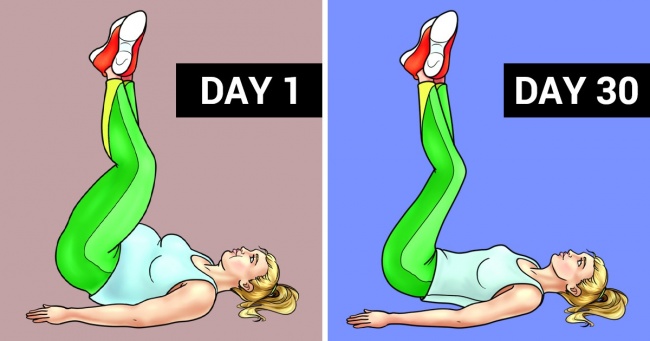Running is more than just a form of exercise—it’s a lifestyle choice that can dramatically improve overall health and well-being. In today’s fast-paced world, finding an efficient, time-tested exercise to boost cardiovascular fitness, aid in weight loss, and enhance mental clarity is essential. This article explores the perfect amount of running for good health by delving into the science behind running, discussing its benefits, and outlining practical tips for safe and effective training.
The Science Behind Running: How It Boosts Your Health
Running has been extensively studied for its myriad benefits to the human body. When you run, your heart rate increases, leading to improved cardiovascular health and enhanced blood circulation. This aerobic exercise is key for reducing blood pressure, strengthening the heart, and lowering cholesterol levels. Studies have shown that regular running stimulates the production of endorphins—commonly known as “feel-good” hormones—which can help alleviate stress and anxiety.
For an in-depth look at how aerobic exercise affects cardiovascular health, you can refer to resources like the Mayo Clinic. Their research emphasizes that even moderate amounts of running can lead to significant long-term health benefits.
Health Benefits of Running: More Than Just Weight Loss
Running offers an array of benefits that extend beyond weight management. Here are some of the key health advantages:
- Cardiovascular Health: Regular running strengthens the heart, improves circulation, and reduces the risk of heart disease.
- Mental Health: Running helps combat depression and anxiety through the release of endorphins and the opportunity for mindful movement.
- Bone Density: Weight-bearing exercises like running increase bone strength and density, lowering the risk of osteoporosis.
- Metabolic Efficiency: Running enhances metabolic rate, which can help with the regulation of blood sugar levels and reduce the risk of type 2 diabetes.
- Improved Lung Capacity: Consistent running increases lung capacity, enhancing overall respiratory efficiency.
For more detailed information, Healthline offers a comprehensive overview of running’s positive effects on physical and mental health.
Determining the Optimal Amount of Running
One of the most frequently asked questions by both new and seasoned runners is: “What’s the perfect amount of running for good health?” The answer varies depending on individual fitness levels, age, and health conditions. However, general guidelines suggest that a minimum of 150 minutes of moderate aerobic exercise or 75 minutes of vigorous exercise per week is beneficial for most adults. For runners, this can translate to running approximately 20–30 minutes per session, three to five times a week.
It’s important to note that more isn’t always better. Overtraining can lead to injuries and burnout. Striking the right balance by gradually increasing intensity and duration is essential. If you are new to running, starting with shorter durations and slowly building up is recommended. For scientifically-backed recommendations, you might find insights from Harvard Health Publishing particularly useful.
Creating an Effective Running Schedule
Developing a structured running schedule is key to maximizing the benefits of your workout while minimizing the risk of injury. Here are some steps to help you create a balanced running plan:
- Start Slowly: Begin with short runs (15–20 minutes) and gradually increase your time and distance.
- Mix Intensity Levels: Incorporate both steady-state runs and high-intensity interval training (HIIT) sessions to boost cardiovascular fitness and metabolic rate.
- Schedule Rest Days: Allow at least one or two days per week for recovery. Rest is critical for muscle repair and preventing overtraining.
- Track Your Progress: Utilize a fitness tracker or a running app to monitor your pace, distance, and heart rate. This can help you adjust your training plan as needed.
- Invest in Quality Gear: Wearing the right running shoes and comfortable workout clothing can improve performance and reduce the risk of injury. High-quality running shoes and fitness gear, often searched alongside terms like “best running shoes” and “running gear”, can be crucial investments.
For a variety of training tips and gear reviews, websites like Runner’s World offer practical advice and up-to-date information on the latest in running equipment and techniques.
Tips for Safe and Effective Running
Safety and proper technique are paramount for long-term running success. Here are some expert tips to ensure you run effectively and avoid common pitfalls:
- Warm-Up and Cool-Down: Always start your run with a warm-up session and finish with a cool-down to prevent injuries. Dynamic stretches before running and static stretches afterward can enhance flexibility.
- Focus on Form: Maintaining the correct running posture—upright, with relaxed shoulders and a slight forward lean—can improve efficiency and reduce the risk of strain.
- Hydration and Nutrition: Staying hydrated and fueling your body with a balanced diet are essential. Consider integrating health supplements or sports nutrition options if you engage in longer runs.
- Listen to Your Body: Pay attention to signs of fatigue or discomfort. Overtraining can lead to injuries such as shin splints or runner’s knee.
- Cross-Training: Incorporate other forms of exercise like cycling, swimming, or strength training to build overall fitness and reduce the impact on joints.
For more insights into running form and injury prevention, check out WebMD’s exercise resources.
Common Running Mistakes and How to Avoid Them
Even experienced runners can fall into pitfalls that hinder progress and lead to injury. Here are some common mistakes and strategies to avoid them:
- Overtraining: Pushing too hard without adequate recovery can lead to burnout and injuries. Ensure you include rest days and vary your training intensity.
- Ignoring Pain: Running through pain can exacerbate injuries. If you experience persistent pain, it may be wise to consult a healthcare professional.
- Poor Footwear: Running in worn-out or inappropriate shoes can increase the risk of injury. Regularly update your running shoes to maintain proper support.
- Skipping Warm-Ups: Neglecting a proper warm-up can strain your muscles and joints, leading to discomfort and injury.
- Lack of Variation: Doing the same routine repeatedly can lead to plateaus. Incorporate different types of runs, such as sprints and long-distance runs, to keep your training dynamic and effective.
For additional advice on avoiding common mistakes, the American Council on Exercise (ACE) provides valuable tips and training strategies.
Running for Weight Loss: Maximizing Calorie Burn
Running is one of the most effective exercises for burning calories and promoting weight loss. Depending on your pace and body weight, running can burn between 400 to 600 calories per hour. This makes it an excellent choice for those looking to manage their weight while improving cardiovascular health.
- Interval Training: Incorporating high-intensity interval training (HIIT) can significantly boost calorie burn during and after your workout.
- Consistent Effort: Maintaining a consistent running schedule helps regulate metabolism and supports long-term weight management.
- Complementary Diet: Pair your running regimen with a balanced, nutrient-rich diet. High-protein meals, combined with healthy supplements and exercise equipment such as resistance bands or weights, can further enhance your weight loss journey.
For further guidance on combining exercise with a nutrition plan, resources like Eat This, Not That! provide actionable insights and meal planning tips.
Integrating Running with a Holistic Fitness Routine
While running is a fantastic cardiovascular exercise, integrating it with other forms of physical activity can help you build a well-rounded fitness routine. Consider these additional exercise modalities:
- Strength Training: Incorporating weightlifting or bodyweight exercises can enhance muscle strength and support joint stability.
- Flexibility Workouts: Yoga and Pilates not only improve flexibility but also aid in recovery and prevent injuries.
- Cross-Training Activities: Swimming, cycling, or even brisk walking can complement your running routine by offering variety and reducing the risk of overuse injuries.
- Mindfulness and Recovery: Practices such as meditation and foam rolling can enhance recovery and overall well-being.
A balanced approach ensures that your body remains well-conditioned, reducing the likelihood of injuries and promoting overall health. For more comprehensive routines, Men’s Health and Women’s Health offer a wealth of articles and workout plans that integrate various fitness modalities.
Tailoring Your Running Routine to Your Personal Goals
Every runner is unique, and the ideal running routine should be tailored to your specific health goals, whether they involve weight loss, endurance building, or simply maintaining a healthy lifestyle. Consider these factors when customizing your plan:
- Current Fitness Level: Beginners should focus on building endurance gradually, while seasoned runners can integrate more intense interval training.
- Health Considerations: If you have any pre-existing health conditions, consult with a healthcare professional before starting a new exercise regimen.
- Lifestyle and Schedule: Your running schedule should be flexible enough to accommodate work, family, and other responsibilities. Consistency is key, even if that means shorter, more frequent runs.
- Progress Tracking: Set realistic goals and monitor your progress. Using fitness apps or wearable technology can help you keep track of improvements in pace, distance, and overall fitness.
Tailoring your routine not only helps you reach your health goals faster but also ensures that running remains an enjoyable and sustainable part of your lifestyle.
Essential Running Gear
Investing in the right gear can make a significant difference in your running performance. Here are some essentials:
- Running Shoes: A quality pair of running shoes is crucial for support and injury prevention. Look for models that offer cushioning and stability.
- Fitness Trackers: Devices that monitor heart rate, distance, and calories burned can help you optimize your workout.
- Apparel: Breathable, moisture-wicking clothing enhances comfort during long runs.
- Accessories: Items such as water bottles, sports sunglasses, and compression socks can improve your overall experience.
Strategies to Prevent Running Injuries
Running injuries can derail your progress if not properly managed. Here are some strategies to keep you running safely:
- Proper Footwear: Regularly replace your running shoes to ensure adequate support.
- Strength and Flexibility Training: Incorporate exercises that build core strength and flexibility.
- Gradual Progression: Increase your running distance and speed slowly to avoid overuse injuries.
- Regular Rest: Listen to your body—rest is as important as the workout itself.
- Professional Guidance: If you experience recurring pain, consider consulting a personal trainer or physical therapist to address biomechanical issues.
For additional preventive measures, the National Institutes of Health (NIH) provides resources on safe exercise practices and injury prevention.
Conclusion: Finding Your Perfect Running Balance
In summary, running offers a wealth of benefits—from improved cardiovascular health and weight loss to enhanced mental clarity and overall wellness. The perfect amount of running for good health isn’t a one-size-fits-all formula; it depends on your personal fitness level, health goals, and lifestyle. By understanding the science behind running, establishing a balanced training schedule, and investing in quality gear, you can create a sustainable running routine that maximizes benefits while minimizing risks.
Remember, the journey to optimal health through running is a marathon, not a sprint. Stay consistent, listen to your body, and adjust your routine as needed. Whether you’re a seasoned runner or just starting out, integrating the right mix of cardio workouts, HIIT sessions, and recovery practices will set you on the path to a healthier, happier life.
For more expert advice and real-world tips, explore additional resources like Runner’s World, Healthline, and Harvard Health Publishing. These trusted sources provide up-to-date information and practical advice to help you optimize your running routine.
By embracing a well-rounded approach to running, you not only improve your physical health but also invest in a lifestyle that promotes long-term wellness. Happy running!
In this comprehensive guide, we’ve covered everything from the science behind running to actionable strategies for creating an effective running schedule. By applying these principles, you can achieve the perfect balance in your running routine, ensuring that every mile contributes to a healthier and more energetic you.
Whether you’re aiming for weight loss, cardiovascular fitness, or overall well-being, the key is to start slowly, listen to your body, and enjoy the journey toward improved health. Happy running and may every stride bring you closer to a fitter, healthier life!
External References:
- Mayo Clinic on Exercise and Heart Health
- Healthline: Benefits of Running
- Runner’s World: Running Tips and Gear Reviews
- Harvard Health Publishing: Exercise Guidelines
- WebMD: Exercise and Injury Prevention
- American Council on Exercise (ACE)
- National Institutes of Health (NIH)
By integrating expert advice, scientifically-backed research, and practical training strategies, this article aims to serve as your go-to resource for discovering the optimal amount of running for good health. With the right approach, running can be a transformative element in your journey toward a more active, balanced, and fulfilling lifestyle.









Leave a Reply